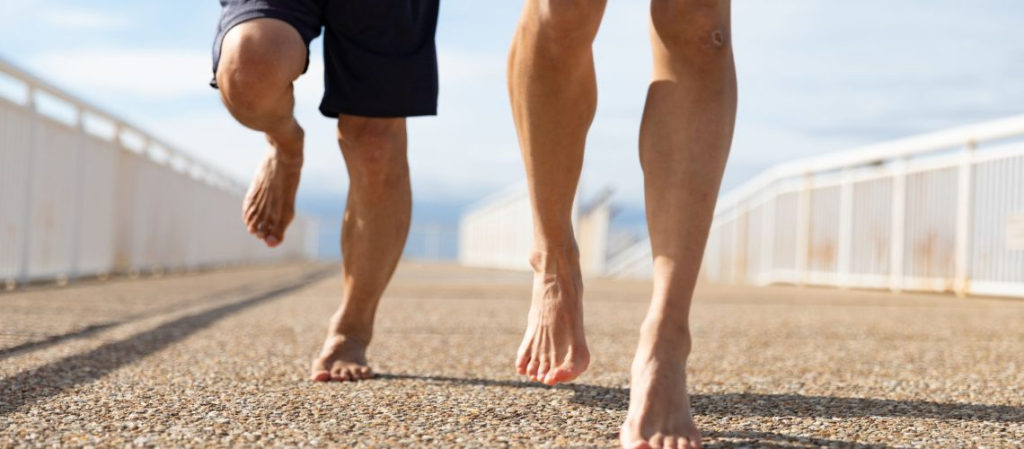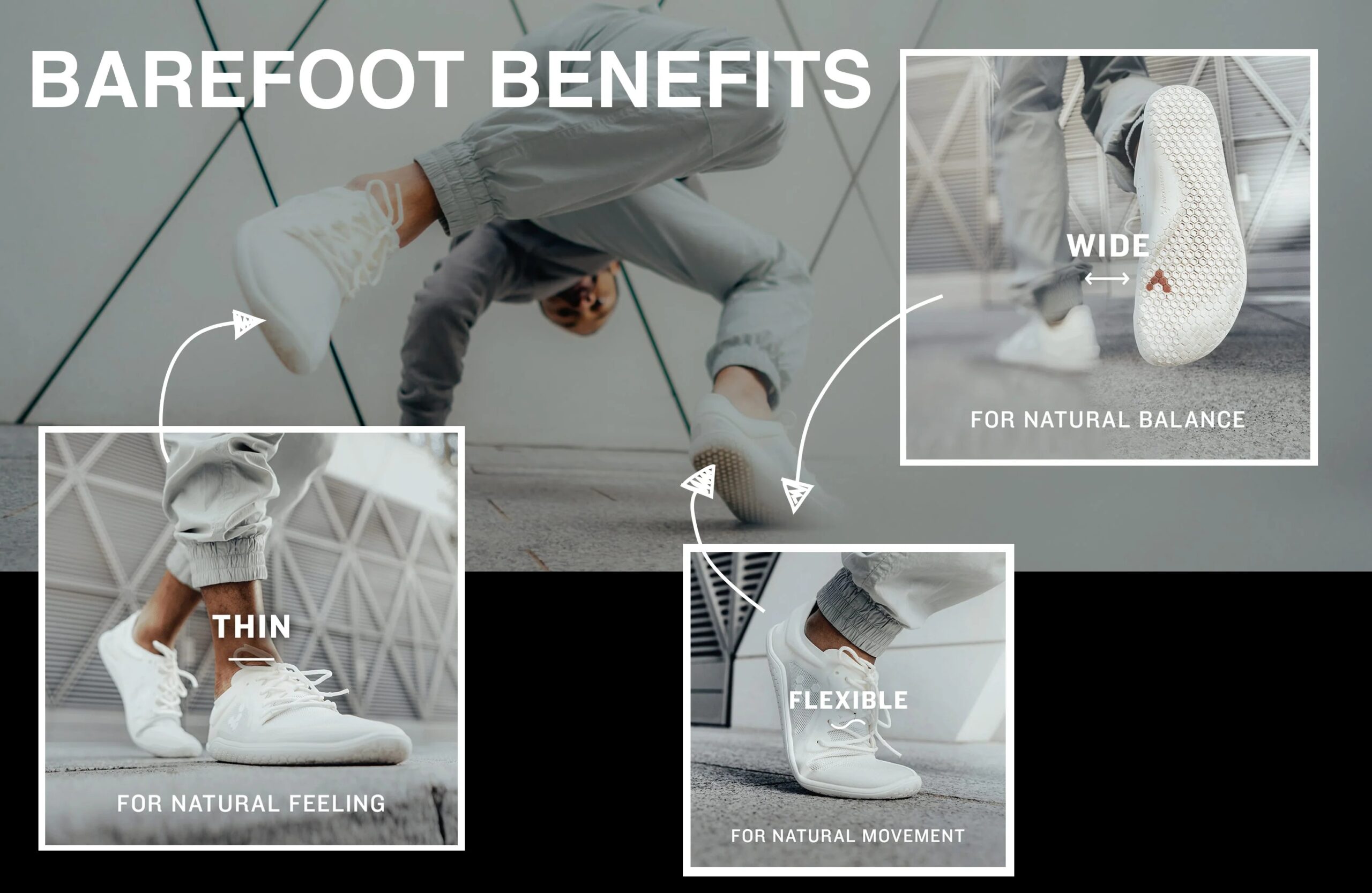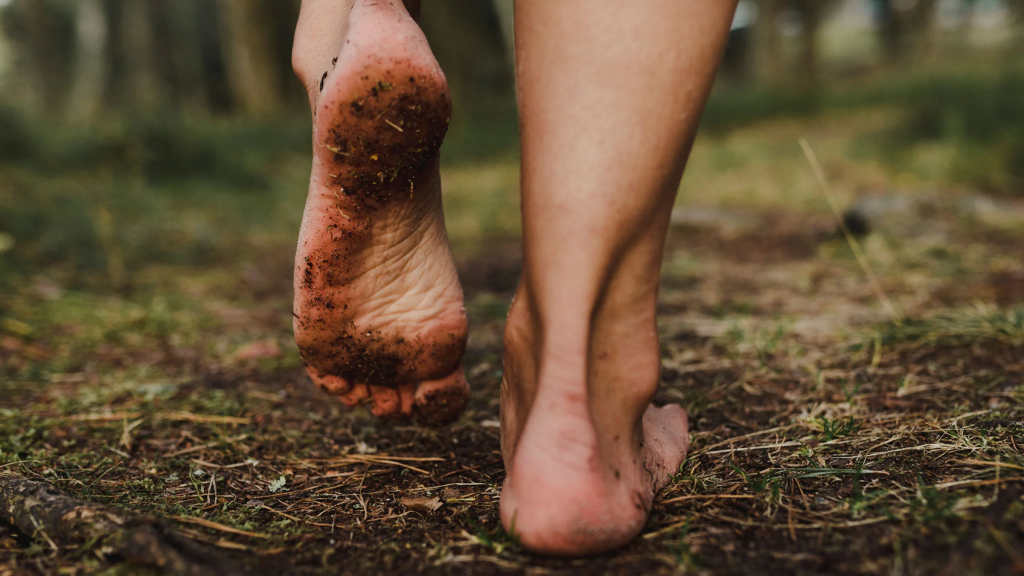Walking and running barefoot has been a practice deeply rooted in human history. From our ancestors traversing various terrains barefoot to modern-day enthusiasts advocating for its benefits, the concept of barefoot activity has stood the test of time. In this article, we explore the numerous advantages of walking and running sans shoes, shedding light on why it continues to captivate individuals seeking a more natural and holistic approach to fitness.
Historical Perspective
Throughout history, humans have predominantly moved barefoot. Whether it was for survival, daily chores, or sports, the absence of footwear was the norm. Ancient civilizations like the Greeks, Romans, and Egyptians often engaged in physical activities barefoot, recognizing the inherent connection between their bodies and the ground beneath them.
Benefits of Walking Barefoot
Improved Posture and Balance
Walking barefoot engages the muscles and tendons in the feet, ankles, and legs, leading to better posture and balance. By allowing the natural arches of the feet to function as they were intended, individuals can develop a more stable gait and reduce the risk of injuries associated with poor alignment.
Strengthening of Foot Muscles
The use of traditional footwear often leads to the weakening of foot muscles over time. Walking barefoot, however, provides an opportunity to strengthen these muscles, enhancing overall foot function and stability. Stronger feet are better equipped to support the body’s weight and withstand the rigors of daily activity.
Better Sensory Feedback
The soles of the feet are rich in nerve endings that provide valuable sensory feedback to the brain. When walking barefoot, these nerves are stimulated, improving proprioception and spatial awareness. This heightened sensory input allows individuals to navigate uneven terrain more effectively and react quickly to changes in their environment.
Benefits of Running Barefoot
 Reduced Impact on Joints
Reduced Impact on Joints
One of the primary advantages of running barefoot is the reduced impact on joints compared to running in cushioned shoes. Barefoot running encourages a forefoot or midfoot strike, which distributes the forces of impact more evenly throughout the lower extremities, potentially lowering the risk of injuries such as shin splints and stress fractures.
Enhanced Biomechanics
Running barefoot promotes a more natural and efficient running stride by encouraging proper biomechanics. Without the cushioning and support of traditional running shoes, individuals are compelled to adopt a gait that minimizes excessive heel striking and overpronation, leading to a smoother and more fluid running motion.
Potential for Injury Prevention
Contrary to common belief, running barefoot can actually reduce the likelihood of certain injuries. By strengthening the muscles and connective tissues in the feet and legs, barefoot runners may experience fewer overuse injuries such as plantar fasciitis and Achilles tendonitis. Additionally, the increased proprioceptive input from the ground can help runners avoid hazardous obstacles and adapt to changes in terrain more effectively.
Vivobarefoot AU: Leading the Barefoot Shoe Revolution

Recognizing the growing interest in barefoot activity, Vivobarefoot AU has emerged as a leading provider of minimalist footwear designed to mimic the experience of walking and running barefoot. Their innovative shoes feature thin, flexible soles that allow for natural foot movement while providing adequate protection from sharp objects and rough surfaces.
The Science Behind Barefoot Shoes
Vivobarefoot AU’s shoes are backed by extensive research and development, drawing inspiration from the biomechanics of barefoot movement. By prioritizing simplicity and functionality, their shoes promote optimal foot health and performance, allowing wearers to experience the benefits of barefoot activity without compromising on comfort or protection.
Transitioning to Barefoot Walking and Running Safely
 While the benefits of barefoot activity are compelling, it’s essential to approach the transition with caution. Gradually incorporating barefoot walking and running into your routine can help minimize the risk of discomfort or injury. Start by spending short periods barefoot on soft, level surfaces, gradually increasing the duration and intensity as your feet adapt to the new stimuli.
While the benefits of barefoot activity are compelling, it’s essential to approach the transition with caution. Gradually incorporating barefoot walking and running into your routine can help minimize the risk of discomfort or injury. Start by spending short periods barefoot on soft, level surfaces, gradually increasing the duration and intensity as your feet adapt to the new stimuli.
Common Misconceptions
Despite the growing popularity of barefoot activity, there are still many misconceptions surrounding its practice. Some believe that walking or running barefoot is unsanitary or unsafe, while others worry about the lack of cushioning and support. However, with proper technique and footwear, barefoot activity can be both safe and beneficial for individuals of all ages and fitness levels.
Real-life Testimonials
Many individuals have experienced firsthand the transformative effects of barefoot walking and running. From improved posture and balance to reduced pain and injuries, the testimonials of barefoot enthusiasts serve as powerful endorsements of this natural and holistic approach to movement.
Conclusion
In conclusion, the benefits of walking and running barefoot are vast and well-supported by both science and anecdotal evidence. By reconnecting with our natural biomechanics and embracing minimalist footwear like those offered by Vivobarefoot AU, individuals can unlock the full potential of their feet and experience the joy of movement in its purest form.
FAQ
- Is walking barefoot suitable for everyone? While walking barefoot can be beneficial for many people, individuals with certain foot conditions or mobility issues should consult a healthcare professional before incorporating barefoot activity into their routine.
- Are barefoot shoes comfortable to wear? Yes, barefoot shoes are designed to provide a comfortable and natural fit. However, it may take some time for wearers to adjust to the unique feel of minimalist footwear.
- Can running barefoot improve my running performance? Running barefoot may enhance running performance for some individuals by promoting better biomechanics and reducing the risk.


